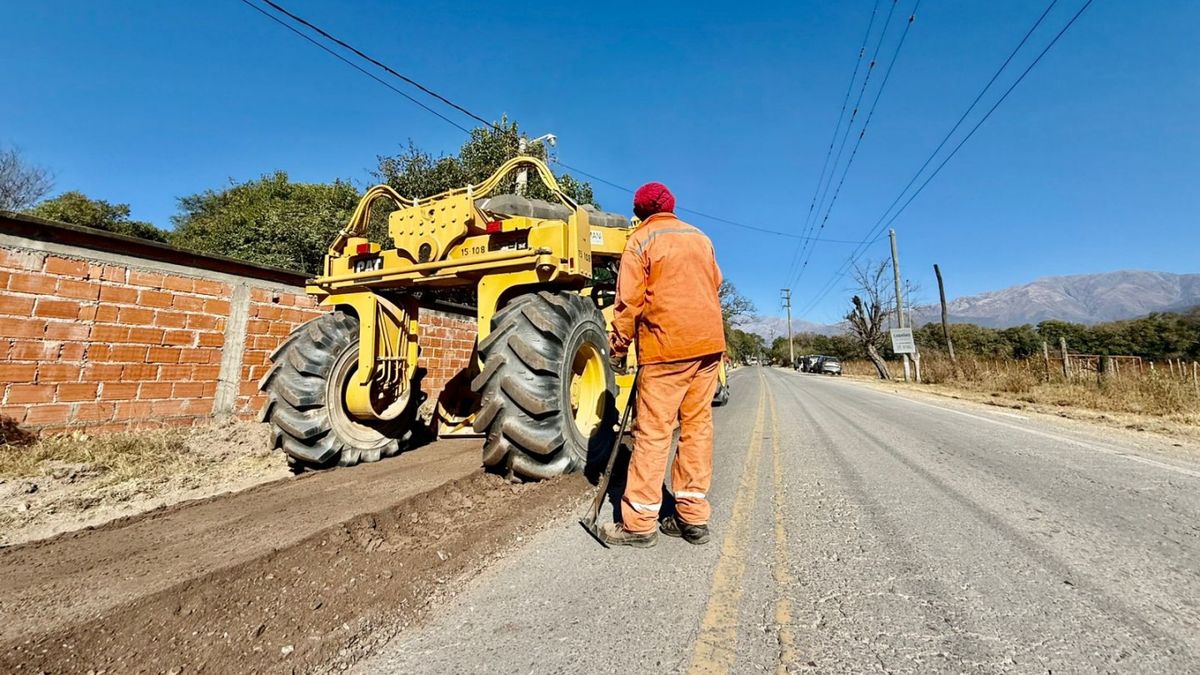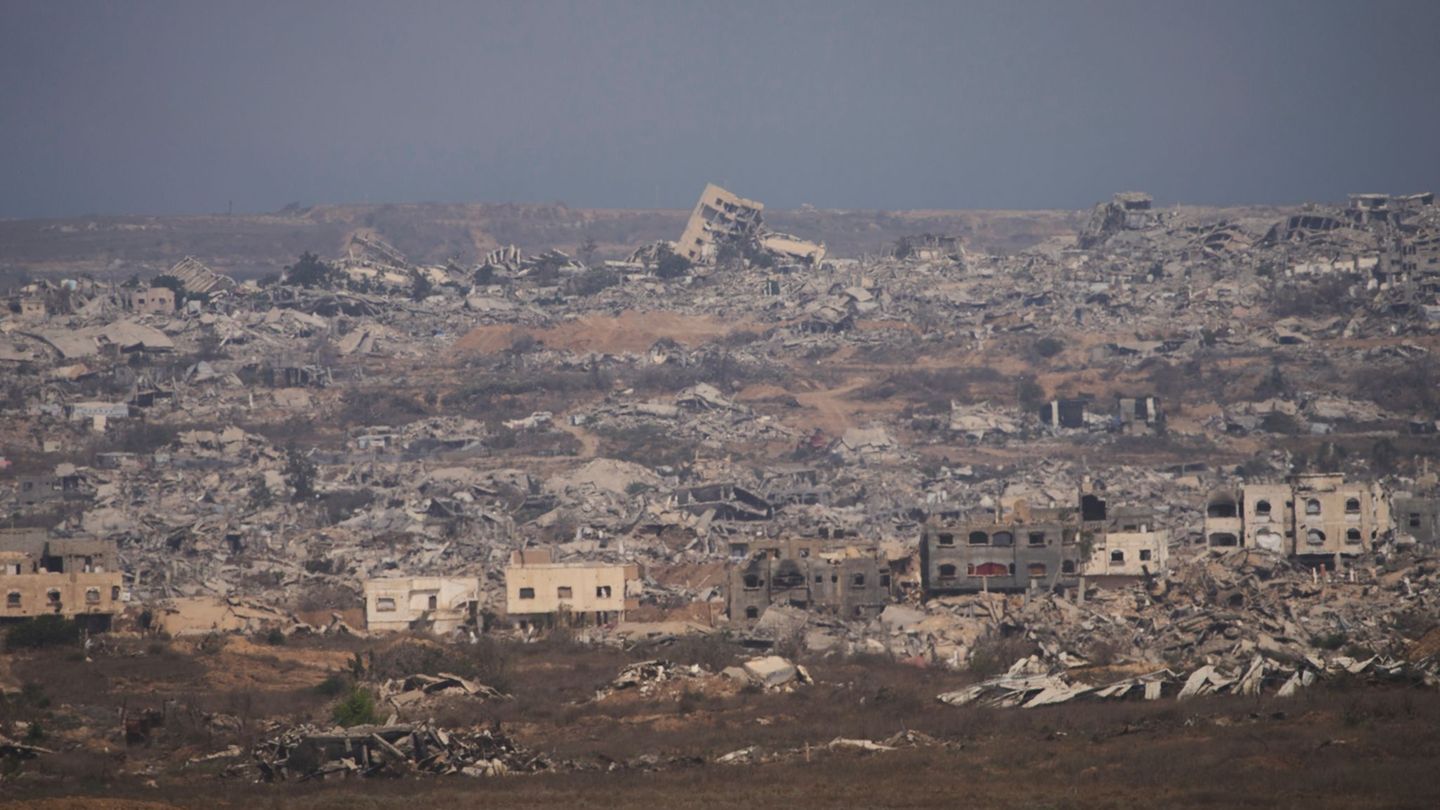In that sense, Gustavo WeissPresident of the Argentine Construction Chamber (Camarco), warned this medium that public works “entered an unknown new world“. We have no idea of How are they going to be the next steps nor how it will work (the measure), ”he said. In turn, he emphasizes that“In all countries there is an organism as roads“Although in Argentina” everything is concentrated, “he reflected for the scope.
Previously, the General Labor Confederation (CGT) expressed its repudiation to the new disposition and warned that the closure of the agency represents a abandonment of the role of the State in strategic infrastructure.
For the workers’ central, it is a “direct attack on the federal country model ” And it emphasizes that this measure “does nothing but transform Argentine routes into a space where, sooner rather than later, Abandonment will lead to more accidents and danger to millions of people who travel them day by day”
Along the same lines, the head of the Road and related workers union (Stvyara), Graciela Aleñáaccused President Milei and the Minister of Deregulation and Transformation of the State, Federico Sturzeneggerto foster “National Death Routes”
What was the National Road Directorate and what was its contribution
Founded in 1932, the National Road Directorate was defined as the technical body with the power of Build, maintain and manage the national road networkthat exceeds 40,000 kilometers and included more than 5,500 workers throughout the country.
So far, he held own equipment and regional offices Around Argentina, appearing as an entity in charge of the execution of strategic works and the maintenance of routes.
After the implementation of these changes, the Ministry of Economy will be in charge of Tenders, maintenance and road planningwhile traffic control will be the responsibility of the Gendarmerie.
On the other hand, the new scheme will incorporate an agency in charge of supervising private road concessions, called Concessions Control and Public Transportation Agency (ACCYSPT), also by the area of Luis Caputo.
The Secretariat of Transportationmeanwhile, will absorb road safety competences before in the hands of the National Road Safety Agency.
For Weiss, its dissolution implies a transfer of functions No clear horizon regarding its operational continuity nor technical criteria for the realization and control of works.
Worries the deterioration of national routes and works stoppage
The National Route Network exhibits a deterioration in its infrastructure prior to the Milei Government, for example in key corridors such as Route 7, 34 and 11.
Likewise, this situation was aggravated nationwide with the paralysis of road works throughout the countryregarding the generalized cut of public works since December 2024.
In this way a report of the Argentina Grande Institute (IAG) highlights the data that the National Road Directorate in 2024: During the past year, 29% of the routes were found in poor conditioncompared to 23% relieved in 2022.
In turn, Regular state routes also increased (from 22.1% to 23.5%) and those that remain in good condition They fell of the 54.9% to 47.5%. The trend coincides with “an almost total brake on public investment in routes”, Where the spent Capital fell on average 82% In real terms. Between January and May 2025, investment in the road network was 75% lower than in the same 2023 period.
The agency highlights the warnings of Shrimp Regarding the level of divestment: “had an immediate and measurable impact”According to its estimates, keep the road system annually (national and provincial) It costs US $ 4,213 millionbut recovering a deteriorated infrastructure implies a disbursement of up to US $40,773 million. In the case of national routes, the recovery cost amounts to U $ 23,240 million.
From this way, IAG concludes that for each weight not invested in maintenance, Ten needed To recover the lost. “The infrastructure is destroyed and deteriorates very quickly when it is not reversed, and maintenance and construction have been for some time and money,” the organism reflects.
52714610-08F2-4347-9176-74A36D6371B3.jpeg
What implies concession more than 9,000 km of routes?
The tender of 9,120 kilometers implies the Private capital entrance to high -traffic strategic corridors. The government’s decision was transmitted by Adorni, who said that “Corruption in public works has its signed death certificate (…) After decades of waste and corruption, the routes were degraded as never before. ”
It is not an initiative approved untimely. Already in May of this year the National Road Directorate He had summoned three public audiences To diagram the removal of 9342.04 kilometers to the Concessionary Company of State Routes Road Corridors Sociedad Anónima (SA), with the aim of deleting it subsequently.
The awarded companies must take care of the Maintenance, expansion and control of the sections, in exchange for toll exploitation. It is a model applied during the nineties and that, according to specialists, without adequate regulation can derive in Tariff increases and control reduction about the quality of the service.
The same indicates Gabriel KatopodisMinister of Buenos Aires Infrastructure: “We will end up paying expensive tolls just to cut the grass or make minor arrangements”, Alert in dialogue with scope.
The PBA official also describes the status of the routes: “The address is completely paralyzed. They changed thrice of administrator and never launched any work in a structural way. All the works that had been running are braking today. ”And lists:
- In Bahía BlancaFor example, The entrance to the city takes 45 minutes Because the work to improve admission is stopped.
- In Chacabuco There was an advanced work by 75%, necessary for being an area with many accidents, and was also braking.
- The Route 7, between Luján and Junínwhere a double road was built, it had 20 kilometers to finish, but it was paralyzed.
- Then there are the strategic routes, which, given the lack of national investment, are demands for the provinces: the 151, which claims Black River; the 34, in Salta; 33, in Santa Fe, and 188 in Buenos Aireswhich is “completely destroyed,” says Katopodis.
“The deterioration is accelerated: Two years without maintenance are already beginning to feel. If the routes are not controlled for more than that period, you have to build a new one, ”explains the former Minister of Public Works.
At the last meeting of Governors in the Federal Investment Council (ICC)held on June 23, the provincial leaders raised the co -participation of the percentage of the fuel tax allocated to finance to the integrated road system (SISVIAL), which has 28.58% of the tax. This trustee In 2024, it had $ 674,627 million through the tax road and $ 1058 billion for transfers.
Source: Ambito




